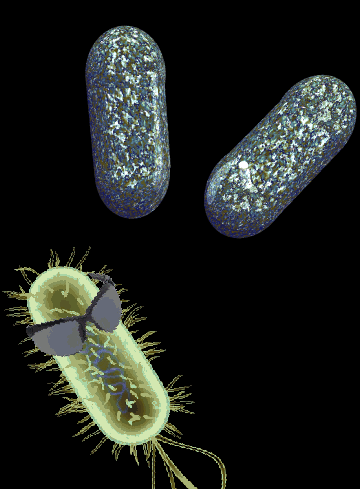Bacteria technique discovered

Monash researchers have discovered a previously unknown method used by bacteria to evade immune responses.
The findings suggest potential new ways of countering bacterial infections, which are becoming increasingly resistant to antibiotics.
The research team took a different approach to understanding the process by which bacteria release toxins that disarm the ‘power-house’ mitochondria in immune cells.
They found that immune cells sense that their mitochondria are no longer functional during infections, which triggers apoptosis.
“Ironically, it is the activation of host cell death factors that deliver the final blow to mitochondria which induces apoptosis, not the bacterial toxins themselves,” first author Dr Pankaj Deo said.
The researchers genetically targeted apoptotic factors and showed that they were able to reduce inflammation in mice, which increased health outcomes.
They used the bacterial pathogens Neisseria gonorrhoeae, uropathogenic Escherichia coli and the deadly Pseudomonas aeruginosa, prevalent in hospitals and which can be multi-drug resistant.
The findings should apply to other species of bacteria too, Dr Deo said.
Dr Thomas Naderer, who oversaw the research, says; “There’s been a lot of effort trying to block endotoxins that kill immune cells but this study really shifts the focus onto different toxins that might be more important.”
“It gives us a few good leads that we can look at as a next step,” he said.
“We’ve shown in this paper that we can accelerate the immune response… the other side is that if that response persists and we get constant inflammation – which is usually associated with bacterial infection and which causes a lot of tissue damage – we have a new way to shut down that tissue-damaging inflammation.”
Dr Deo said it is a surprising new way of thinking.
“What scientists have thought before is that when endotoxins are released by bacteria they induce an inflammatory type of programmed cell death called pyroptosis in immune cells,” Dr Deo said.
Endotoxins are part of the external cell wall of essentially all gram-negative bacteria.
“We’ve found that the pathogenic bacteria use a similar mechanism to release additional toxins,” he said.
“They kill immune cells by releasing small surface structures called outer membrane vesicles – packages of toxins that target mitochondria. The mitochondria are disarmed, become dysfunctional then die according to apoptosis or cellular suicide.”
The scientists will investigate drugs that are now advancing to the clinic, and at repurposing drugs already in use, perhaps as anti-cancer treatments, to see if they can be used to clear bacterial infections.







 Print
Print